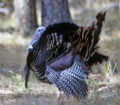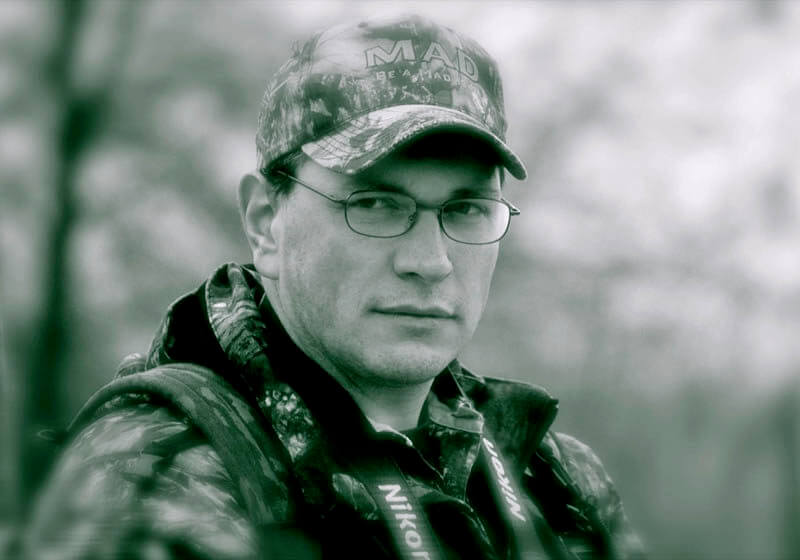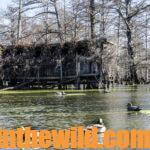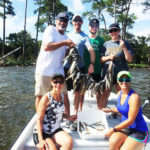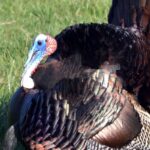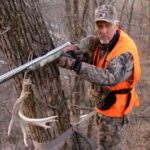Editor’s Note: Matt Van Cise of Brookville, Pennsylvania, loves to hunt and call turkeys. He’s won seven World Open Championships, five Senior Grand Nationals, two Grand National Friction Calling Championships, a World Friction Championship, three U.S. Opens, the Mid-American Open and the North American Open. If you include all the smaller calling contests, he’s probably won over 100. He recently won the 2018 National Wild Turkey Federation (NWTF) (www.nwtf.org) Grand Nation Friction Calling Contest.
I’ve been calling competitively since 1996 and hunting turkeys for more than 27 years. There are numbers of turkey hunters in Pennsylvania, and plenty of public lands where hunters can take wild turkeys there. Many hunters can find 200,000 acres to hunt relatively close to home. The secret to hunting public land is to not hunt in the most-obvious places, like many hunters do. Remember, some turkey hunters hunt the same areas year after year.
 Right now, our turkey population in Pennsylvania is very good. You can walk almost any ridge top or stop on any dirt road, call and hear a turkey gobble. Many hunters go to the same regions and park in the same place every day they hunt. They leave their trucks there, walk into the woods and call the same way each day. I try to go into places where other hunters aren’t hunting by simply steering clear of other hunters’ vehicles. Each morning, I check different areas to find the most-aggressive turkeys. The turkeys gobbling the most are the gobblers that will come to a call. I don’t waste my time trying to take stubborn gobblers. I can take a stubborn bird, but I feel I’m most successful when I identify turkeys that want to come to a call on the day I’m hunting. I can return and hunt the reluctant turkeys on another day.
Right now, our turkey population in Pennsylvania is very good. You can walk almost any ridge top or stop on any dirt road, call and hear a turkey gobble. Many hunters go to the same regions and park in the same place every day they hunt. They leave their trucks there, walk into the woods and call the same way each day. I try to go into places where other hunters aren’t hunting by simply steering clear of other hunters’ vehicles. Each morning, I check different areas to find the most-aggressive turkeys. The turkeys gobbling the most are the gobblers that will come to a call. I don’t waste my time trying to take stubborn gobblers. I can take a stubborn bird, but I feel I’m most successful when I identify turkeys that want to come to a call on the day I’m hunting. I can return and hunt the reluctant turkeys on another day.
People ask me what I’m doing to win all these world and national championships. Winning a championship is related to how you present the call. I spend time listening to wild turkeys, and I’ve developed a unique sound. I use the standard hen yelp, but the sound I make is similar to a box call’s nasal sound.
At a distance, in my opinion, a friction call gives the most-realistic turkey call of any of the types of turkey calls that we use today. I really like the versatility of a friction call, especially a pot-type friction call. You can make the softest clucks, yelps and purrs on this call, and you can make a pot call as loud as you ever need it to be. You also can produce some of the most-realistic turkey sounds on a pot call that you can make on any other type of turkey call.
 Another advantage to the pot call is that you can make the pot call sound like multiple different turkeys. Too, you can call on different places on the call – the side of the call, half way to the middle of the call and in the middle of the call. You can use various strikers made of different woods and other substances, and each one of those strikers will sound like a different turkey. You can put various amounts of pressure on the striker and sound like a different turkey. There are many other things you can do with a pot call to change the sound, until you find a sound to which the turkey wants to gobble.
Another advantage to the pot call is that you can make the pot call sound like multiple different turkeys. Too, you can call on different places on the call – the side of the call, half way to the middle of the call and in the middle of the call. You can use various strikers made of different woods and other substances, and each one of those strikers will sound like a different turkey. You can put various amounts of pressure on the striker and sound like a different turkey. There are many other things you can do with a pot call to change the sound, until you find a sound to which the turkey wants to gobble.
The surface of the pot call, including a slate surface, an aluminum surface, a crystal surface and a titanium surface, also changes the sound the pot call produces. But my two favorite surfaces for a pot calls are aluminum and titanium. I believe those two surfaces give you a smoother and more-realistic sound than other surfaces do. These two surfaces can make any turkey call that a wild turkey can make. If I’m going to shoot the turkey, I use these two calls to locate a gobbler. But when the turkey starts to come in, I change to a diaphragm call, so I can have both my hands on my shotgun. If I’m calling for someone else to take the turkey, I’ll either have an aluminum or a titanium pot call in my hand during the entire time I’m calling to that turkey.
Many turkey hunters have been sold the idea that to be a really-good turkey taker you have to use a diaphragm call. Then you always can have your hands on either your shotgun or your bow. However, as far as for making a realistic turkey sound, I don’t believe you can beat a friction call.
 One of the new surfaces that has come to the market in the last few years is titanium. But, titanium is becoming harder and harder to find, and that surface is extremely expensive. Right now, I’m out of titanium for building calls. I’m trying to find a place to buy more of it, but there’s no guarantee that I’m going to be able to find any more. The price for aluminum, crystal and slate calls will be about the same price, but a pot call with a titanium surface may increase by $10 or $15.
One of the new surfaces that has come to the market in the last few years is titanium. But, titanium is becoming harder and harder to find, and that surface is extremely expensive. Right now, I’m out of titanium for building calls. I’m trying to find a place to buy more of it, but there’s no guarantee that I’m going to be able to find any more. The price for aluminum, crystal and slate calls will be about the same price, but a pot call with a titanium surface may increase by $10 or $15.
To see and learn more about the custom calls that Van Cise is making, go to his Facebook page at High Class Calls by Matt Van Cise https://www.facebook.com/Highclasscalls, or you can go to his personal Facebook page Matt Van Cise www.facebook.com/matt.vancise.
To learn more about turkey hunting, check out John E. Phillips’ print, Audible and Kindle turkey books at https://johninthewild.com/books/#turkey. You also can download a free Kindle app that enables you to read the book on your iPad, computer or SmartPhone. For a free copy of John E. Phillips’ “The Turkey Gobbler Getter Manual,” go to https://johninthewild.com/free-books/.

